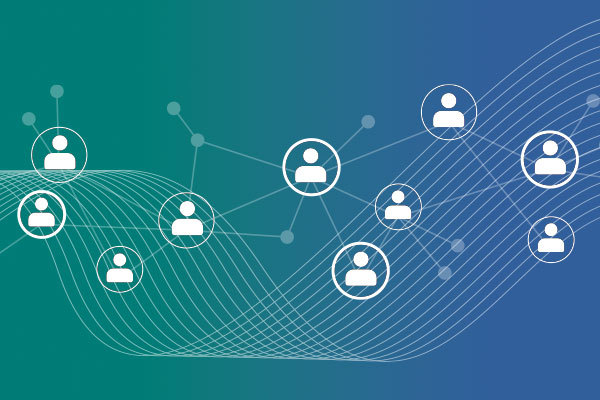How Data Science and Software Create More (and better) Pricing Jobs
By Zilliant
May 12, 2020
Table of Contents
Hey, that machine moved my cheese!
In 1998, Spencer Johnson, M.D., published “Who Moved My Cheese,” which quickly became a number one best-seller and workplace phenomenon. This timeless book is based on a simple parable that plainly exposes truths about dealing with change and finding out what is most important in life.
As Amazon synopsizes: "Cheese" is a metaphor for what you want to have in life — whether it is a good job, a loving relationship, money, a possession, health, or spiritual peace of mind. And the ‘maze’ is where you look for what you want — the organization you work in, or the family or community you live in. In the story, the characters are faced with unexpected change. Eventually, one of them deals with it successfully, and writes what he has learned from his experience on the maze walls.
When you come to see ‘the handwriting on the wall,’ you can discover for yourself how to deal with change, so that you can enjoy less stress and more success (however you define it) in your work and in your life.”
The book came out during a time when companies were reducing their workforces through greater efficiencies, some of which were brought on by the dawn of the age of the internet. It practically became standard operating procedure in human resource departments to issue the book to employees being displaced in the corporate downsizings that resulted.
Some speculate this book may once again find its way into “separation packets” as companies leverage even newer and more advanced technologies like artificial intelligence (AI) and machine learning (ML) to replace functions typically held by humans. It would not be the first time a machine was thought to threaten the livelihood of the common man.
When technology advances, jobs evolve
AI and ML, and the attendant software used to deliver these capabilities, are most definitely boosting efficiency and making life easier for thousands of professionals in a broad number of industries today. Workers at nearly every level, across nearly every industry, are worried about the same thing: Will these sophisticated capabilities put them out of a job one day? But more often than not, these high-tech capabilities that facilitate automation and improve decisions actually create more new jobs rather than render old ones obsolete.
A good example from history is the advent of ATMs. With their introduction, bank tellers naturally worried their positions would be eliminated. And while it’s true that over time, the number of tellers at individual branches declined as ATMs began to proliferate, the cost of operating banks also dropped. Banks were then allowed to expand and open more branches and provide more products and services, which in turn increased the demand for bank employees.
Even today with new payment technologies like PayPal® and Venmo®, personal banking requires an increasingly interdependent combination of people and machines — with the result being a business sector that serves customers much more efficiently and effectively — while at the same time adding new and more diverse roles. Not only did ATMs fail to eliminate bank tellers, but they added value to their roles and expanded their responsibilities beyond simply dispensing bills and counting coins.
Streamlining workflow, not replacing it
Fear of job loss from technology can sometimes be predicated on the idea that one’s job will become fully automated and no longer require an actual person sitting behind a desk to fulfill the duties of the position. But a far more likely scenario — and one that’s less threatening — is that automation will enable greater efficiency and better performance for these workers, while also making their jobs more fulfilling.
Artificial intelligence is being used by doctors, lawyers, engineers, stock traders, military personnel, machine operators and truck drivers. In the pricing realm, it is changing the way pricing teams make decisions and manage their workflows. Rather than replacing a pricing analyst, a much more likely scenario is that their current position will evolve into a potentially more strategic and important role to the firm.
Just imagine what pricing professionals could be doing with their time when they are no longer forced to spend long hours:
Creating spreadsheets and models in spreadsheets
Tracking pricing decisions and outcomes by hand
Manually matching thousands of line items to product masters
Tracking down minute details in hundreds if not thousands of agreements
Constantly fixing manual errors
With these tasks streamlined by technology, pricing professionals can more effectively manage pricing decisions to create the best possible outcomes for the enterprise.

Creating the future, not responding to it
Some of the duties and responsibilities of the pricing analyst in this future state have not even been discovered yet, while others are already taking shape today. In many of the B2B companies Zilliant serves, the pricing department is increasingly playing a much more strategic and central role in the success of the company.
That’s because intelligence and automation are helping the pricing staff to graduate from “pushing paper,” data entry and data analysis, to functions that permit much more collaboration with other departments such as product, marketing, sales, finance and IT.
With the addition of data science and sophisticated software, pricing analysts can now help their companies leverage previously unnoticed trends in customer behavior and buying patterns. They can better monitor and manage customer agreements, while ensuring they get the optimal price into the hands of those who need it.

The beginning of a new chapter
Artificial intelligence is here to stay, and a recent survey from MIT Technology Review indicated that one of the top use cases for AI is pricing. While Zilliant has been providing pricing teams with data science-driven software for over two decades, we are still in the early chapters of a much longer story. These capabilities are rapidly redefining pricing roles and boosting the productivity of pricing departments. Rather than taking jobs away, they are elevating the strategic importance of these resources while making everyone’s job more enjoyable.
If you would like to learn more about how Zilliant supports the evolution of the pricing function in world-class organizations using data science, software and innovative approaches to solve today’s most complex pricing problems, reach out to me at kyle.nations@zilliant.com or connect with me on LinkedIn. Let us help you use your best resources to achieve pricing excellence.



